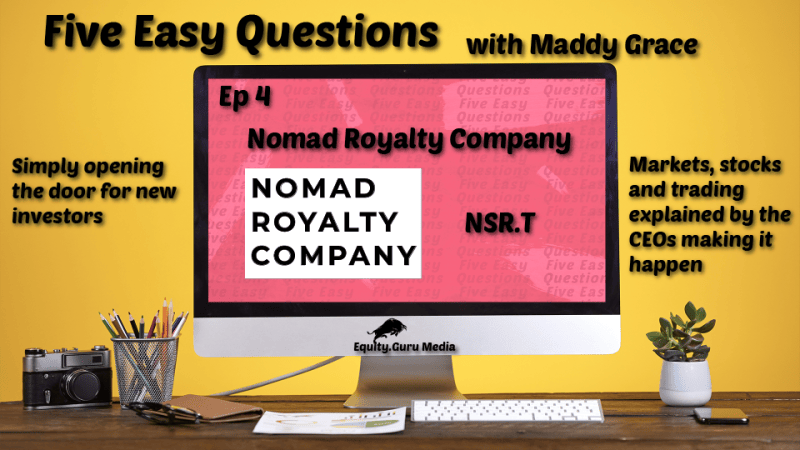Investor sentiment in today’s public market typically resides in three broad buckets, those looking for growth in U.S. tech stocks, Robin Hood traders looking for speculative investing and conservative investors looking to protect their buying power through risk off assets like gold.
There are a few ways to invest in the gold sector, in the commodity, in ETFs like GDXJ and in the junior miners themselves but the best way in terms of minimal downside and a whole lot of upside are royalty streaming companies.
A royalty company is a specialized financier, funding cash-poor explorers and developers for a royalty on whatever the project brings out of the ground or an agreed upon cut of the commodity produced.
Royalty companies are low risk as they absorb gold pricing volatility, they also have less reliance on debt and produce more sales per employee than the explorers themselves. A good example of this is Nomad Royalty Company (NSR.T) based out of Montreal, Quebec, Canada. Nomad has streaming agreements across the Americas, as well as Africa and Australia.
Nomad’s assets are largely in gold with 49% of its portfolio in production providing a delivery guidance of 17,000 oz of gold and 675,000 oz of silver in 2021. Nomad has significant financial support from Orion Resource Partners, a global alternative investment firm, and mining major Yamana Gold (YRI.T).
To further fuel its pursuits, Nomad inked a deal with Canada’s big three banks for a USD$50 million revolving credit facility with the option to increase to $75 million. With its sizable war chest and producing projects Nomad intends to increasingly reward its investors while growing a portfolio to compete with the biggest players in the royalty streaming sector. Nomad Royalty Company, building a better future today.
Speaking of which, Nomad announced on July 27, 2020, that the company had signed another net smelter royalty agreement for the Troilus Gold Project, located in Quebec, Canada. The total consideration for this brownfield deposit royalty, which has significant potential for resource expansion, comes to approximately USD$7.5 million. Tune in!





